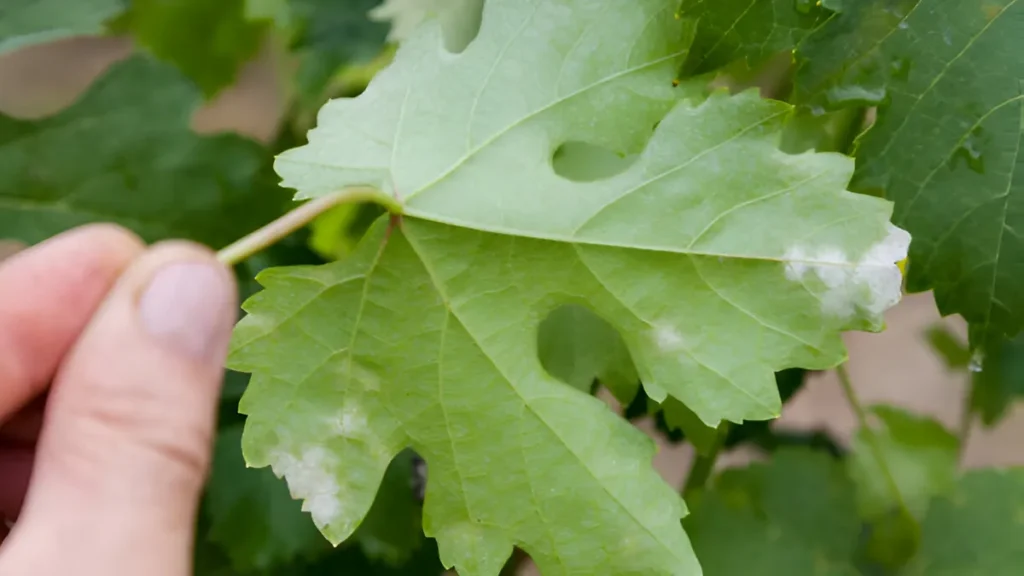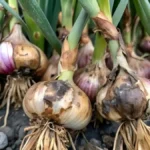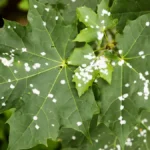Plant diseases known as downy mildew are brought on by a variety of oomycetes, which are fungi-like organisms. Leaf loss, stunted development, or plant death are possible outcomes of the illness, which appear as yellow, brown, or purple patches on the upper surfaces of leaves. Due to its propensity for spreading quickly in chilly, damp environments, downy mildew can cause large losses in agricultural output. A thorough discussion is had on how to diagnose and control downy mildew.
Downy mildew symptoms:
Plant diseases include downy mildew. These methods will help you recognize it with ease.
- Upright leaves with downy mildew have angular, light green to yellow patches; these lesions eventually dry out and turn brown. Curling, twisting, or distortion are possible in affected leaves.
- To induce symptoms, the virus has to infect lettuce and grow in damp, chilly circumstances with moisture on the leaves. Smaller leaves and fewer blooms or fruits could indicate a stunted overall growth of the plant.
- First to be attacked are older leaves. If the infection is severe enough, the plant may wilt, especially in warm, humid weather, or its leaves may turn brown and eventually drop prematurely.

How to get rid of downy mildew:
Leaves, stems, and even flowers or fruits are especially affected by downy mildew. This page describes its rapid treatment procedure.
Downy mildew treatment:
- Watering your plants from below will help avoid downy mildew since it need water to survive. The downy mildew cannot get to or infect your plants if the leaves of your plants are dry. Eliminate plants that are seriously damaged. Keep the area around your plants well-ventilated by avoiding dense planting and controlling weeds.
- Consider using selective trimming to increase air circulation if at all possible. Adjust the temperature and humidity levels to lessen the growth of downy mildew indoors or in a greenhouse. Open vents to increase ventilation since high humidity might lead to fungal issues.
- When selecting plants, look for kinds that are resistant to downy mildew. Cucumbers, grapes, and lettuce are among the crops where this works quite well. Use fungicides that are made especially for it.
- Raindrops scatter the disease-causing spores that are secreted from the underside of contaminated leaves. Since downy mildew infections require prolonged leaf wetness, serious outbreaks are most likely to happen outside during rainy summers.
- Low air humidity causes rapid transpiration in plants, which increases the danger of wilting if water is lost from the leaves before it can be absorbed by the roots. To help control downy mildew, think about utilizing biological therapies that contain beneficial microorganisms like Bacillus subtilis or Trichoderma species.
- Eliminating dead plant matter from your garden in the fall will help stop the illness from spreading the following spring. This disease overwinters on dead plant material. To prevent pathogen accumulation in the soil, avoid planting sensitive plants in the same spot every year.
Conclusion:
In conclusion, preventing the growth of downy mildew in your garden also requires good garden hygiene. It mostly damages plants’ leaves, stems, and fruits, which results in decreased photosynthesis, slowed development, and in extreme situations, plant mortality. Utilizing resistant plant cultivars, crop rotation, and appropriate spacing to promote air circulation are just a few of the cultural practices that go into the control and prevention of downy mildew. The solutions listed above can help you solve your downy mildew issue.
Certainly! If you’d like to learn more, please consider following our WhatsApp Channel: Harvest Gardening
A frequently asked questions:
Q1. What is downy mildew?
A1. Plants that are afflicted by a fungal-like disease called downy mildew develop brown or yellow patches on their leaves as well as a white to grayish fuzz on their undersides. It spreads by way of infected plant waste and airborne spores.
Q2. What is basil downy mildew?
A2. Peronospora belbahrii is the culprit behind the fungal disease known as “basil downy mildew,” which causes yellowing leaves and a grayish mold to develop on the undersides of basil plants. Via spores dispersed by the wind, water, or tainted objects and vegetation, it spreads.
Q3. Is downy mildew harmful to humans?
A3. It is not harmful to people to have downy mildew. However, these plant diseases are detrimental to plants; they can wipe out an entire crop and destroy the majority of the plants in a matter of weeks.
Q4. What is the difference between downy mildew vs powdery mildew?
A4. On the upper leaf surface, downy mildew shows as yellowish patches, while on the underside, it takes the form of grayish mold. Conversely, powdery mildew has a white appearance. Usually affecting the bottom of leaves, downy mildew causes yellowish patches on the upper surface of the leaves.
Q5. What are the early symptoms of downy mildew in cucumbers?
A5. Pale yellow patches on the upper surface of cucumber leaves are one of the early signs of downy mildew. These patches turn brown as the disease worsens, and the leaves may curl and eventually die.



